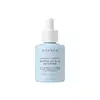What's inside
What's inside
 Key Ingredients
Key Ingredients

 Benefits
Benefits

 Concerns
Concerns

No concerns
 Ingredients Side-by-side
Ingredients Side-by-side

Water
Skin ConditioningGlycerin
HumectantPropanediol
SolventDiglycerin
HumectantNiacinamide
SmoothingSea Silt Extract
Skin ConditioningAmmonium Acryloyldimethyltaurate/Vp Copolymer
Butylene Glycol
HumectantCalanthe Discolor Extract
Skin ConditioningCalcium Gluconate
HumectantCamellia Japonica Seed Oil
EmollientCaprylyl Glycol
EmollientCarbomer
Emulsion StabilisingCarnosine
Skin ConditioningCetearyl Olivate
Citric Acid
BufferingCopper Gluconate
Skin ConditioningGluconolactone
Skin ConditioningHydroxyacetophenone
AntioxidantLeontopodium Alpinum Callus Culture Extract
AntioxidantMagnesium Aspartate
Skin ConditioningOlea Europaea Fruit Oil
MaskingPaeonia Lactiflora Root Extract
Skin ConditioningPalmitoyl Tetrapeptide-7
Skin ConditioningPalmitoyl Tripeptide-1
Skin ConditioningPolysorbate 20
EmulsifyingSimmondsia Chinensis Seed Oil
EmollientSodium Lactate
BufferingSorbitan Olivate
EmulsifyingTrehalose
HumectantXanthan Gum
EmulsifyingZinc Gluconate
Skin ConditioningBenzyl Alcohol
PerfumingPhenoxyethanol
PreservativePotassium Sorbate
PreservativeSodium Benzoate
MaskingWater, Glycerin, Propanediol, Diglycerin, Niacinamide, Sea Silt Extract, Ammonium Acryloyldimethyltaurate/Vp Copolymer, Butylene Glycol, Calanthe Discolor Extract, Calcium Gluconate, Camellia Japonica Seed Oil, Caprylyl Glycol, Carbomer, Carnosine, Cetearyl Olivate, Citric Acid, Copper Gluconate, Gluconolactone, Hydroxyacetophenone, Leontopodium Alpinum Callus Culture Extract, Magnesium Aspartate, Olea Europaea Fruit Oil, Paeonia Lactiflora Root Extract, Palmitoyl Tetrapeptide-7, Palmitoyl Tripeptide-1, Polysorbate 20, Simmondsia Chinensis Seed Oil, Sodium Lactate, Sorbitan Olivate, Trehalose, Xanthan Gum, Zinc Gluconate, Benzyl Alcohol, Phenoxyethanol, Potassium Sorbate, Sodium Benzoate
Ingredients Explained
These ingredients are found in both products.
Ingredients higher up in an ingredient list are typically present in a larger amount.
Glycerin is already naturally found in your skin. It helps moisturize and protect your skin.
A study from 2016 found glycerin to be more effective as a humectant than AHAs and hyaluronic acid.
As a humectant, it helps the skin stay hydrated by pulling moisture to your skin. The low molecular weight of glycerin allows it to pull moisture into the deeper layers of your skin.
Hydrated skin improves your skin barrier; Your skin barrier helps protect against irritants and bacteria.
Glycerin has also been found to have antimicrobial and antiviral properties. Due to these properties, glycerin is often used in wound and burn treatments.
In cosmetics, glycerin is usually derived from plants such as soybean or palm. However, it can also be sourced from animals, such as tallow or animal fat.
This ingredient is organic, colorless, odorless, and non-toxic.
Glycerin is the name for this ingredient in American English. British English uses Glycerol/Glycerine.
Learn more about GlycerinWater. It's the most common cosmetic ingredient of all. You'll usually see it at the top of ingredient lists, meaning that it makes up the largest part of the product.
So why is it so popular? Water most often acts as a solvent - this means that it helps dissolve other ingredients into the formulation.
You'll also recognize water as that liquid we all need to stay alive. If you see this, drink a glass of water. Stay hydrated!
Learn more about WaterXanthan gum is used as a stabilizer and thickener within cosmetic products. It helps give products a sticky, thick feeling - preventing them from being too runny.
On the technical side of things, xanthan gum is a polysaccharide - a combination consisting of multiple sugar molecules bonded together.
Xanthan gum is a pretty common and great ingredient. It is a natural, non-toxic, non-irritating ingredient that is also commonly used in food products.
Learn more about Xanthan Gum